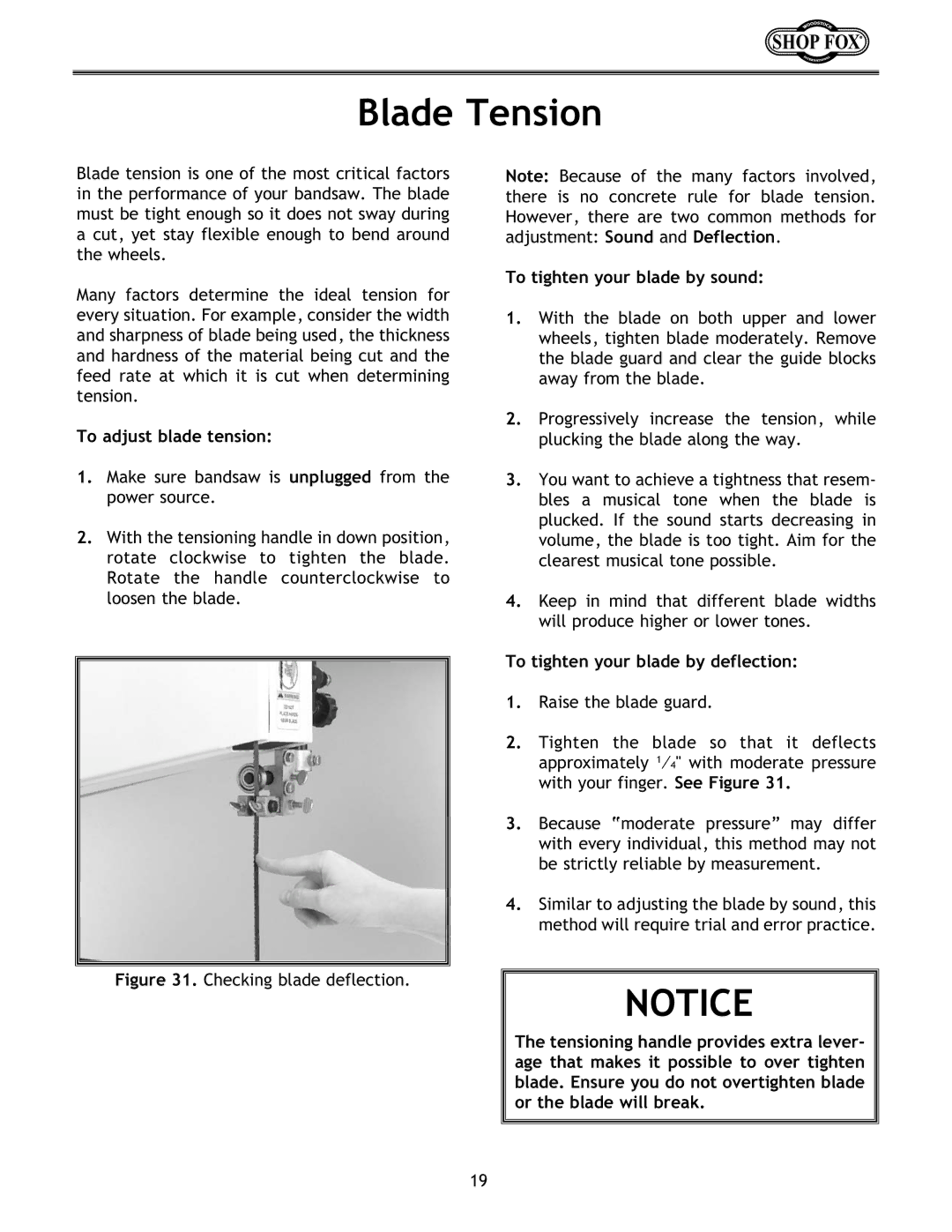
Blade Tension
Blade tension is one of the most critical factors in the performance of your bandsaw. The blade must be tight enough so it does not sway during a cut, yet stay flexible enough to bend around the wheels.
Many factors determine the ideal tension for every situation. For example, consider the width and sharpness of blade being used, the thickness and hardness of the material being cut and the feed rate at which it is cut when determining tension.
To adjust blade tension:
1.Make sure bandsaw is unplugged from the power source.
2.With the tensioning handle in down position, rotate clockwise to tighten the blade. Rotate the handle counterclockwise to loosen the blade.
Figure 31. Checking blade deflection.
Note: Because of the many factors involved, there is no concrete rule for blade tension. However, there are two common methods for adjustment: Sound and Deflection.
To tighten your blade by sound:
1.With the blade on both upper and lower wheels, tighten blade moderately. Remove the blade guard and clear the guide blocks away from the blade.
2.Progressively increase the tension, while plucking the blade along the way.
3.You want to achieve a tightness that resem- bles a musical tone when the blade is plucked. If the sound starts decreasing in volume, the blade is too tight. Aim for the clearest musical tone possible.
4.Keep in mind that different blade widths will produce higher or lower tones.
To tighten your blade by deflection:
1.Raise the blade guard.
2.Tighten the blade so that it deflects approximately 1⁄4" with moderate pressure with your finger. See Figure 31.
3.Because “moderate pressure” may differ with every individual, this method may not be strictly reliable by measurement.
4.Similar to adjusting the blade by sound, this method will require trial and error practice.
NOTICE
The tensioning handle provides extra lever- age that makes it possible to over tighten blade. Ensure you do not overtighten blade or the blade will break.
19
